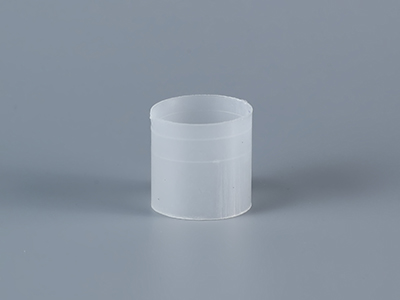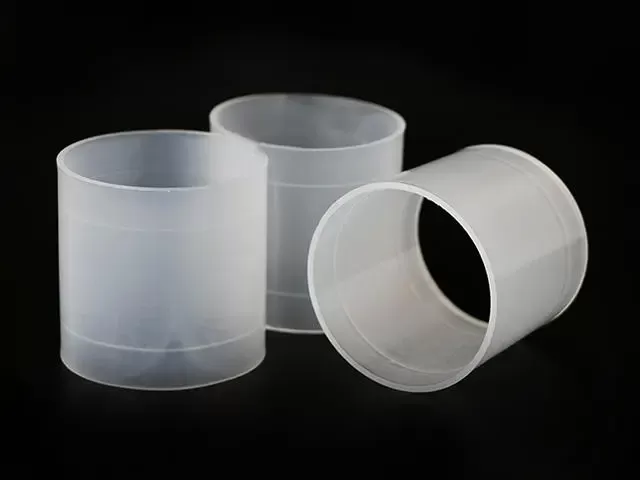Plastic
raschig ring packing is a common type of
random packing, and its working principle is centered on enhancing gas - liquid contact to promote mass and heat transfer. This article will explain the working principle of plastic Raschig ring packing.
The basic structure of plastic Raschig ring packing is a hollow cylinder with equal height and diameter, made from plastic materials such as polypropylene (PP) or polyvinyl chloride (PVC). This simple cylindrical design forms a tortuous path for fluids when packed randomly in a column or tower, which is fundamental to its working mechanism.

When gas and liquid flow through the column filled with plastic Raschig ring packing, the gas typically moves upward while the liquid flows downward. The cylindrical shape of the Raschig rings creates a large number of voids and contact points. As the liquid descends, it adheres to the inner and outer surfaces of the rings, forming thin liquid films. These films significantly increase the contact area between the gas and liquid phases, which is essential for mass transfer processes like absorption or stripping.
In absorption processes, for example, the target component in the upward - flowing gas comes into contact with the liquid film on the Raschig rings. Due to differences in solubility or partial pressure, the component dissolves into the liquid, transferring from the gas phase to the liquid phase. The tortuous path created by the randomly packed rings disrupts the smooth flow of the gas, causing it to mix more thoroughly. This increased turbulence ensures that even gas molecules that might otherwise bypass the liquid have a higher chance of coming into contact with the liquid film, improving absorption efficiency.

For distillation, the working principle relies on the exchange of heat and mass between the vapor (rising from the bottom) and the liquid (flowing from the top). The plastic Raschig rings provide surfaces where the vapor can condense, releasing heat, and the liquid can vaporize, absorbing heat. The cylindrical structure helps trap the vapor, allowing sufficient time for the more volatile components to vaporize and the less volatile ones to condense. This continuous exchange, facilitated by the increased contact area from the rings, enables the separation of components in the mixture.
The void space between the plastic Raschig rings is another key aspect of their working principle. This space allows for the free flow of both gas and liquid, reducing pressure drop compared to more densely packed structures. However, the random arrangement ensures that the flow is not too streamlined; instead, it creates eddies and mixing, which further enhance the interaction between the phases. The balance between void space and contact area is crucial—too much void space would reduce contact, while too little would increase pressure drop excessively.
The material properties of the plastic also contribute to the working principle. Plastics like PP and PVC are resistant to many chemicals, making the Raschig rings suitable for corrosive environments. Their smooth surfaces allow the liquid to spread evenly, forming continuous films rather than beading up, which maximizes the effective contact area. Additionally, the lightweight nature of plastic ensures that the packing does not add excessive weight to the column, making installation and maintenance easier.
In summary, the working principle of plastic Raschig ring packing revolves around its cylindrical structure, which creates a tortuous path for fluids, increases gas - liquid contact area through liquid film formation, promotes turbulence and mixing, and balances void space with contact efficiency. These factors collectively enable effective mass and heat transfer in various industrial processes.



